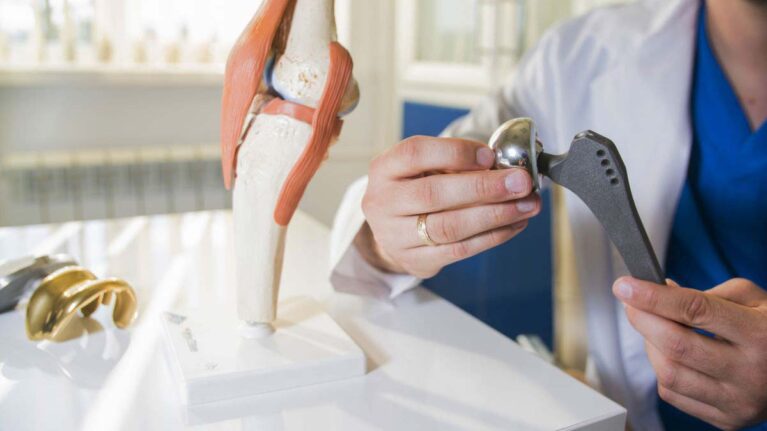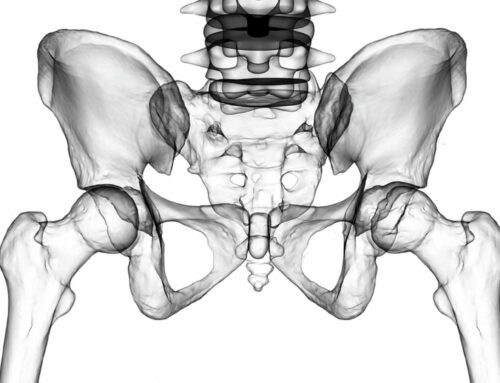Hip implants, also known as hip prostheses, are devices used in hip replacement surgeries to replace damaged or diseased parts of the hip joint. In India, the demand for hip implants has been increasing due to a growing aging population, rising incidences of arthritis and hip fractures, and advancements in medical technology.
Here’s an overview of hip implants in India:
Types of Hip Implants
Total Hip Replacement (THR):
- Involves replacing both the acetabulum (hip socket) and the femoral head (thigh bone head).
- Common materials include metal-on-polyethylene, ceramic-on-ceramic, and metal-on-metal.
Partial Hip Replacement (Hemiarthroplasty):
- Only the femoral head is replaced, commonly used for hip fractures.
Hip Resurfacing:
- The femoral head is capped with a smooth metal covering, and the damaged bone and cartilage within the socket are replaced with a metal shell.
Hospital Equipment Mfg. Co. – A leading Manufacturer in India
Hospital Equipment Mfg. Co. is a leading manufacturer and exporter of hip implants based in India. The company has been at the forefront of the medical device industry, specializing in the production of high-quality hip replacement products. With a state-of-the-art manufacturing facility and a team of experienced engineers and technicians, Hospital Equipment Mfg. Co. has established itself as a trusted name in the global orthopedic market.
The company’s hip implants are designed to provide patients with a durable and long-lasting solution for their hip-related issues. The products are engineered using advanced materials and cutting-edge technologies, ensuring superior performance and reliability. Hospital Equipment Mfg. Co. has a strong focus on innovation, continuously investing in research and development to stay ahead of the curve and meet the evolving needs of the healthcare industry.
With a strong emphasis on quality, safety, and customer satisfaction, Hospital Equipment Mfg. Co. is dedicated to improving the lives of patients by providing them with innovative and reliable hip replacement solutions. The company’s ongoing efforts to enhance its product offerings and customer service have earned it a reputation as a reliable and trustworthy partner in the healthcare industry.
Advances in Hip Implant Technology
Materials:
- Improved materials like ceramics and highly cross-linked polyethylene to increase longevity and reduce wear.
Design:
- Anatomically designed implants for better fit and function.
- Modular implants allowing customization based on patient needs.
Minimally Invasive Surgery:
- Techniques that reduce recovery time and improve outcomes.
- Challenges and Considerations
Accessibility and Affordability:
- While urban centers have access to advanced hip replacement surgeries, rural areas often lack such facilities.
Regulations and Quality Control:
- Ensuring the quality and safety of implants is crucial. Regulatory bodies like the Central Drugs Standard Control Organization (CDSCO) oversee these aspects in India.
Post-Surgery Rehabilitation:
- Essential for successful outcomes, involving physical therapy and regular follow-ups.
- Insurance and Government Schemes
- Many insurance plans in India cover hip replacement surgeries.
Hip implants in India are increasingly accessible, with advancements in technology and surgical techniques offering improved outcomes for patients. However, challenges in terms of accessibility and affordability remain, especially in rural areas. Continuous efforts in quality control, patient education, and healthcare infrastructure development are essential to address these issues.
Role of Hip Implants in health care
Hip implants play a crucial role in healthcare by significantly improving the quality of life for patients with severe hip joint issues.
Here’s an in-depth look at the role of hip implants in healthcare:
Restoring Mobility and Reducing Pain
Improving Quality of Life:
- Hip implants are often used to treat conditions such as osteoarthritis, rheumatoid arthritis, hip fractures, and other degenerative joint diseases that cause pain and limit mobility. By replacing the damaged parts of the hip joint, these implants help restore movement and function.
Pain Relief:
- Patients with severe hip damage often experience chronic pain. Hip replacement surgery, with the use of implants, can alleviate this pain, allowing patients to resume daily activities with minimal discomfort.
Enhancing Patient Outcomes
Increased Independence:
- Post-surgery, many patients regain their ability to perform daily activities independently, which enhances their overall sense of well-being and reduces the need for long-term care.
Improved Physical Activity:
- With reduced pain and increased joint functionality, patients can participate in physical activities that were previously difficult or impossible. This includes walking, swimming, and other low-impact exercises.
Economic and Social Benefits
Reducing Healthcare Costs:
- Although the initial cost of hip replacement surgery and implants can be high, it often results in long-term savings by reducing the need for ongoing medical treatments, pain medications, and physical therapy associated with chronic hip conditions.
Enhanced Productivity:
- Younger patients and those in the working age group can return to their jobs and maintain their productivity, contributing positively to the economy.
Advances in Implant Technology
Longer-lasting Implants:
- Advances in materials and design have led to the development of more durable implants, which can last for 20 years or more, reducing the need for revision surgeries.
Minimally Invasive Techniques:
- Modern surgical techniques have become less invasive, reducing recovery times, minimizing scarring, and lowering the risk of complications.
Addressing Public Health Concerns
Aging Population:
- As the global population ages, the incidence of hip-related issues is increasing. Hip implants are essential in managing the health needs of an aging population, helping elderly patients maintain mobility and independence.
Trauma and Injuries:
Hip fractures and injuries, common among the elderly due to falls, are effectively treated with hip implants, preventing long-term disability and improving recovery outcomes.
Challenges and Future Directions
Accessibility and Affordability:
- Ensuring that hip implants and related surgical procedures are accessible and affordable, especially in low-income and rural areas, remains a challenge. Efforts to increase the availability of high-quality, cost-effective implants are ongoing.
Customization and Personalization:
- Advances in technology, including 3D printing and personalized medicine, are paving the way for custom-fitted implants tailored to individual patient anatomy, which can improve outcomes and longevity of the implants.
Rehabilitation and Aftercare:
- Comprehensive post-surgery rehabilitation programs are crucial for optimal recovery. Integrating physical therapy and continuous patient education can enhance the benefits of hip implants.
Conclusion
Hip implants are a pivotal component in modern healthcare, offering numerous benefits that extend beyond physical health to economic and social well-being. By restoring mobility, reducing pain, and improving overall quality of life, hip implants contribute significantly to public health. Ongoing advancements in technology and surgical techniques, coupled with efforts to improve accessibility and affordability, will continue to enhance their impact in the coming years.




Leave A Comment